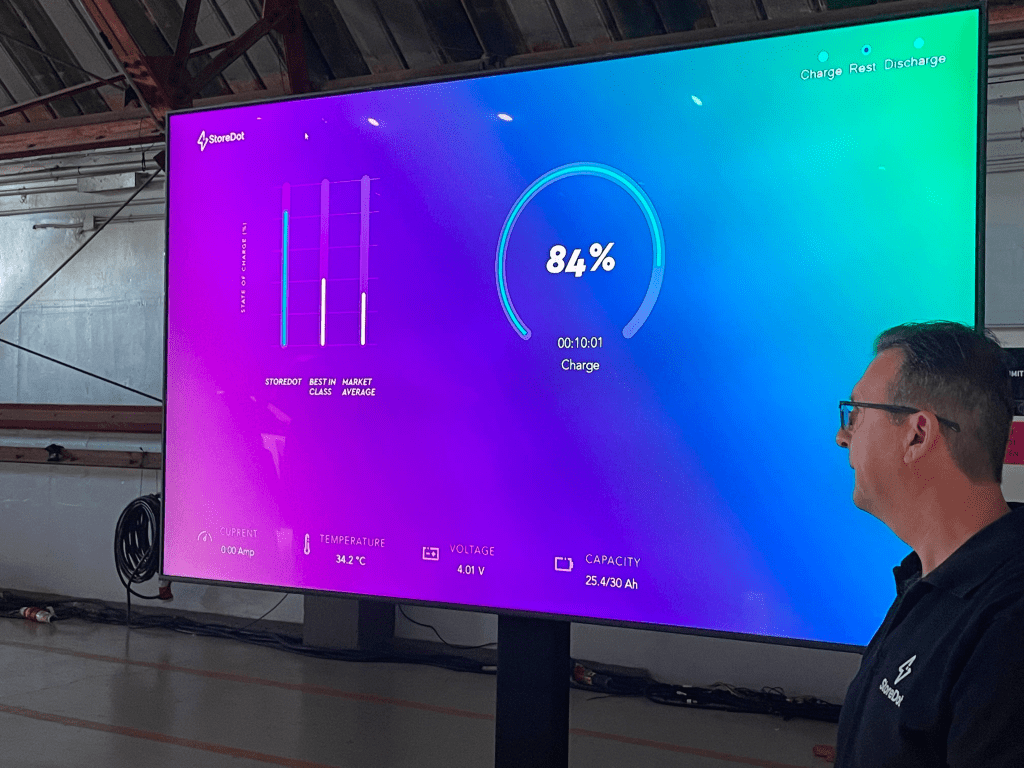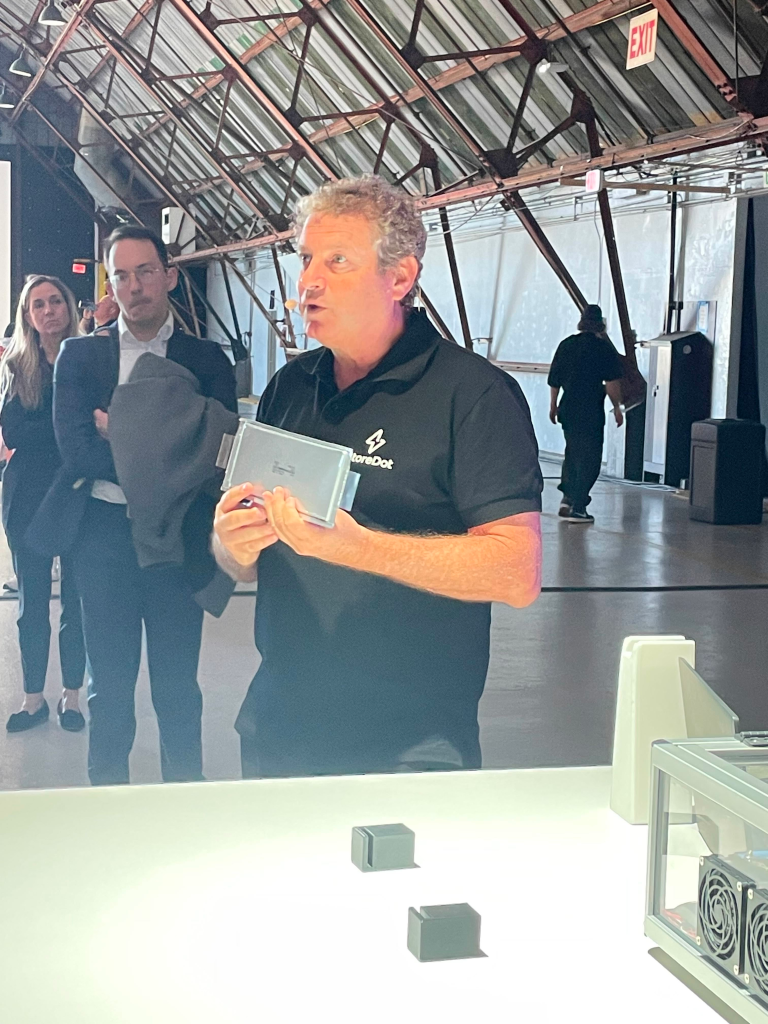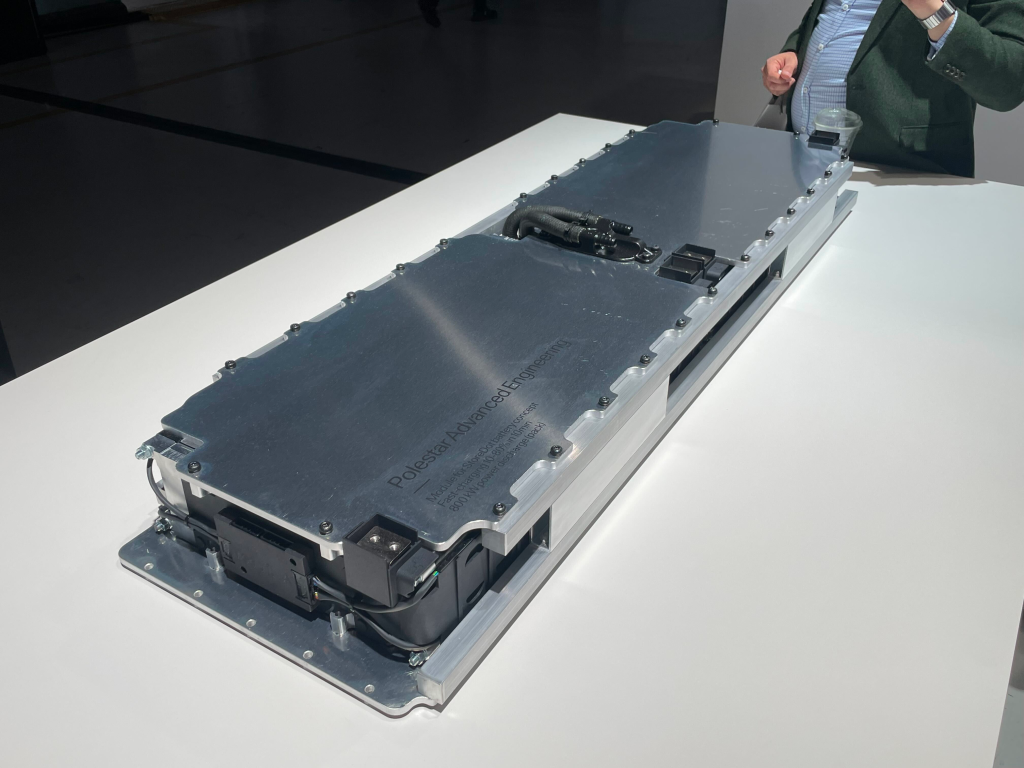
Polestar will trial StoreDot’s “extreme fast charging” technology on its upcoming Polestar 5, enabling the addition of 100 miles of range in 5 minutes of charging.
We’re at Polestar Day in Santa Monica today, where the company is showcasing its future plans to media, investors and owners. For more news from the day, check out our Polestar Day News Hub.
Polestar is an investor in StoreDot, and today at Polestar Day, it has announced that it will demo StoreDot’s 100in5 battery technology in its Polestar 5, formerly known as the Precept concept, a sleek 4-door GT electric car.
StoreDot, an Israel-based company, has demonstrated battery and charging technology that it dubs “100in5,” due to its ability to add 100 miles of range in 5 minutes of charging. It also calls this “XFC” technology, short for “Extreme Fast Charging.”
It’s a clever marketing effort, aiming to make it easier for the public to understand just how fast EVs can charge when using the highest-speed chargers in the best conditions.
But for us in the EV world, it might better to translate that into the kW numbers we all know and love. Polestar and StoreDot don’t have an actual kW number, but we can come up with an estimate based on average consumption numbers.
Doing some rough math on average EV consumption (~300Wh/mi), 100 miles would mean about 30kWh of energy, which means a charge rate of around 360kW if you can get that amount of juice in 5 minutes. Round it down to 350kW since we’ve seen that number before and we’ll call it a day.
Currently, Polestar vehicles can mostly charge in the 200-250kW range, which is pretty quick. Most EVs coming out these days can charge somewhere in the 150-180kW range (with some slower ones out there, like our much-loved Chevy Bolt still at 50kW), and the better performers are in the 200s or even into the 300s.
But StoreDot says that its batteries have a completely flat charge curve, with constant current input all the way through 80% (and perhaps even beyond). This means that overall charging speeds can be much faster, since the batteries don’t taper to a slower charge rate as they fill up.



The practical effect is much faster car charging, which can also be seen on the Ioniq 5, which has a flat charge curve to 80% (but at a lower ~180kW).
StoreDot says that it gets to this point by replacing the graphite in a lithium ion battery with silicon. This was a challenge because silicon has worse high-temperature characteristics than graphite. There are a number of other companies working on silicon batteries as well, which should finally be coming to market soon(™).
But 350kW on the car end of things only works if the network also supports speeds that fast. Currently, Tesla’s superchargers cap out at 250kW, but the upcoming V4 superchargers will be capable of 350kW, and Electrify America has “hyper-fast” 350kW chargers in many locations.
Even at current charge rates of 250kW and below, the best electric cars available today are already fantastic for roadtrips – assuming they’re paired with a well-functioning fast charging network. On that front, Polestar did recently commit to joining the NACS standard, opening up access to Tesla’s Supercharger network.
350kW would be about the fastest-charging car available if it was out today _ especially with a flat charging curve – but Polestar 5 will only trial this technology for now, and it won’t be in production in a few years.
Just a few days ago, Polestar announced that it will use Korean battery supplier SK On for production-spec Polestar 5 batteries when the vehicle starts production in 2025, and we don’t know what charge rates that car will be capable of. It plans to bring the StoreDot XFC batteries into production-spec Polestar 5s in 2027.
At that point, though, StoreDot says its batteries will almost be available (that translates to around 600kW, for reference). Those are supposed to hit early production in 2028 – but Polestar says it takes time to assemble the batteries into packs and to scale production, so the 2024-model 100in5 will go into production in 2027, and the later 100in3 might presumably take a few years to get into cars after initial 2028 release as well.
That said, solid state batteries have been “just around the corner” for longer than I’ve been following EVs (and that’s a long time), so we wouldn’t be surprised to see that timeline get pushed back a little.
Author: Jameson Dow
Source: Electrek



